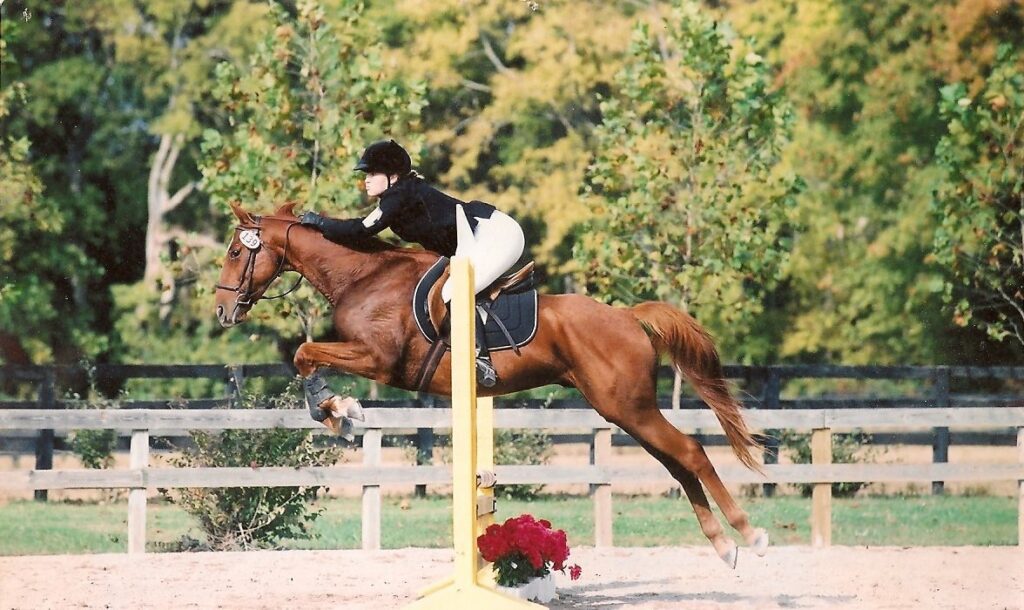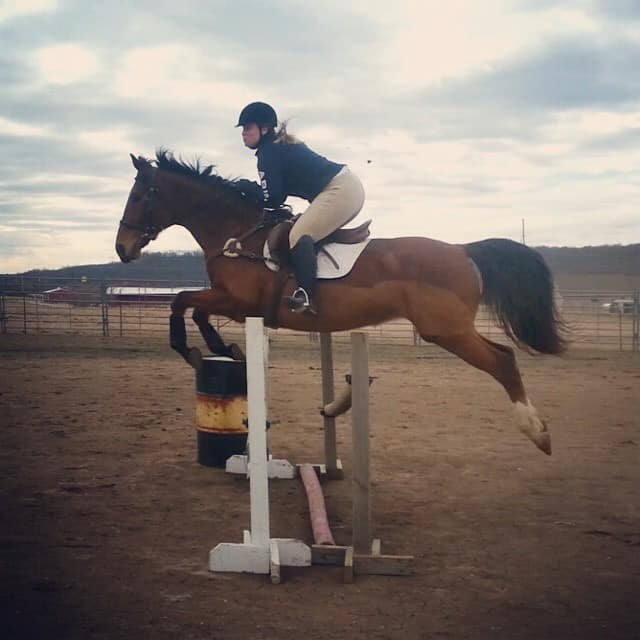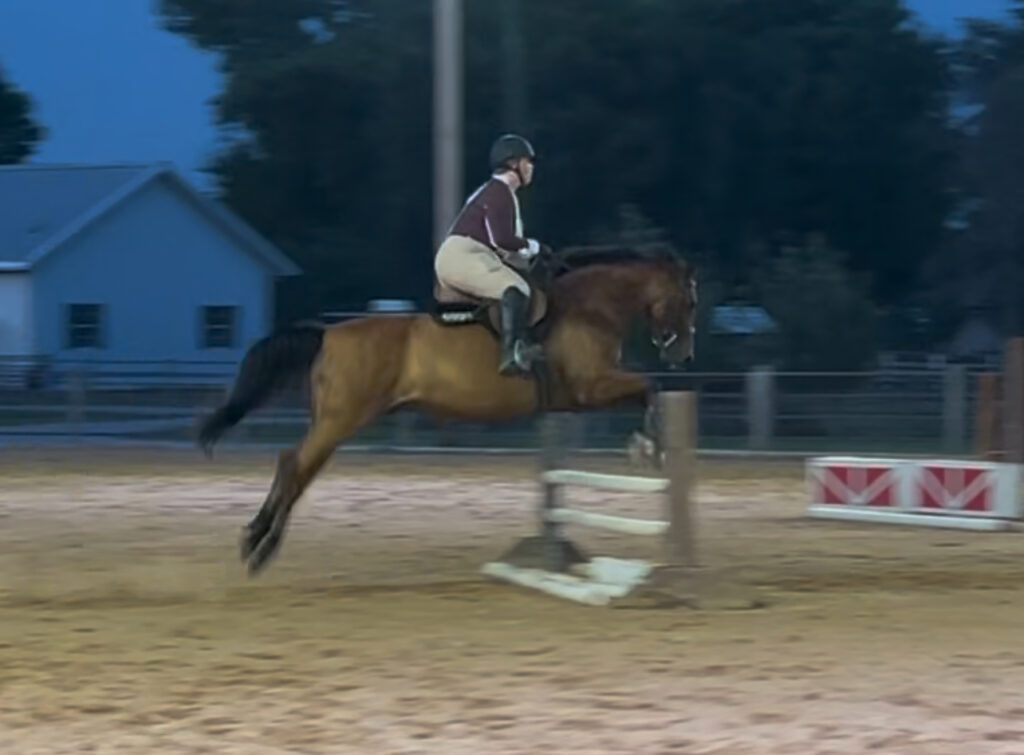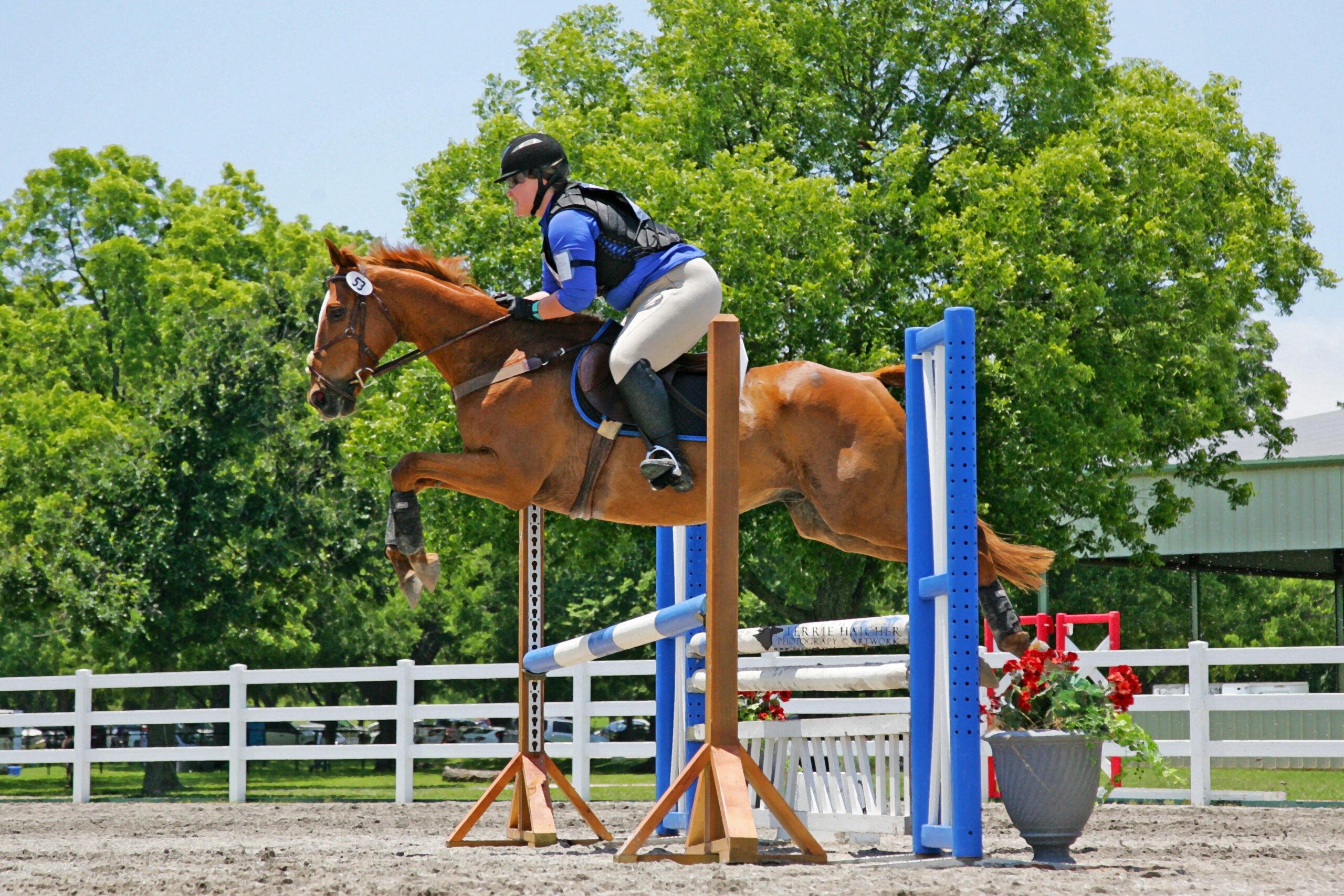At some point over the last decade, my jumping style has become increasingly defensive. I wasn’t always this way. As a young person, I rode aggressively and often threw my reins away over fences. Moe was such a reliable, enthusiastic jumper that I never worried he would refuse or run out or otherwise plant me in the dust. He was so enthusiastic, however, that I developed a habit of pulling when approaching a jump in an effort to slow him down and help him balance.

Gina was much less reliable and frequently stopped or ducked out at jumps. This behavior, combined with my desire to stay on at all costs in the hunt field, eventually led me to ride in more of a backseat position to fences and release less dramatically over jumps. It was a strategy that worked pretty well for riding her. I usually rode with a lot of contact because I felt like it was the best way to prevent a nasty run-out.

This is not a strategy that works well for Story. Story does not want her rider to have much of a hold on the reins approaching a fence. She seems fine with a little contact, but she becomes upset if her rider pulls. She is likewise very unhappy if her rider doesn’t release much over the jump and lands with a death grip on the reins. Story’s preferred method of expressing her displeasure is bucking, which has put me on the ground a couple of times.

In an effort to ride the horse the way she’d like to be ridden (and avoid falling off), I’ve been trying to retrain myself to give those big, generous releases I used as a teenager. This is hard! I now ride like a dressage rider, very upright and with more contact in my thighs than my lower legs. I am more cautious than I used to be; I don’t want to fall off! Story’s pace towards jumps feels quick, even though it’s entirely reasonable. (This is probably a result of riding Madigan, the world’s slowest horse, so often.) My reflexes feel dull and my brain seems to shut off entirely when I turn towards a jump.
One good thing about being a middle aged amateur is that I’m not trying to prove anything. Hell, I hardly have goals beyond “stay on” and “have fun” these days. So on Sunday, I set up an embarassingly small crossrail in the indoor arena and decided to work on riding like I trusted the horse to get me to the other side. My goal was to stay out of Story’s face on both sides of the jump and really put the reins forward in the air.

No one else was at the barn, so I don’t actually know what I looked like. But I can tell you I felt like I was seven years old and practicing the basics of two point and jumping. I sent Story to the jump at a quiet trot, though by the third or fourth attempt she picked up a calm canter about two strides out. Even though I desperately wanted to pull (why? I don’t know!), I kept my hands in the same place until I felt her front end rise. I made a conscious effort to push my hands towards her ears over the crossrail and not snatch the reins back after she landed. Story seemed to appreciate my efforts. She approached the jump quietly, jumped it appropriately, landed on the correct lead, and cantered off without bucking or shaking her head or otherwise telling me I don’t know how to ride her.
I’m encouraged by the success of this ride. When our horses are struggling with something, we often think to break concepts down into easy, understandable exercises to help reinforce behavior and build confidence. It makes sense to apply this thinking to ourselves, too! Did I feel silly making this big effort over a 12″ jump? Kind of! Did I feel a little more confident in my ability to ride Story over a jump? Yes!
Years of bad habits and muscle memory aren’t undone in one ride, so this exercise is one I need to repeat many times. Eventually, I’ll add another jump or two and increase the height. But for now, I think we’ll stick with the easiest possible thing!

2 responses to “Unlearning Defensive Riding Habits”
Oh I love this! It makes sense how you got to where you are, and the new plan to undo some of it is a great one. Eros feels similarly to Story. He prefer you let him do the job and just stay out of the way. And 9 times out 10 he is the one who is correct!
Unlearning muscle memory and habits is so challenging. It sounds like you’re making great progress! Hopefully it keeps getting easier with more repetition.